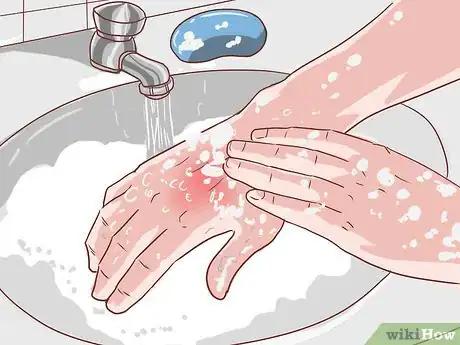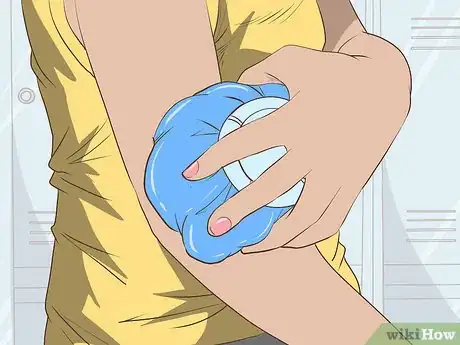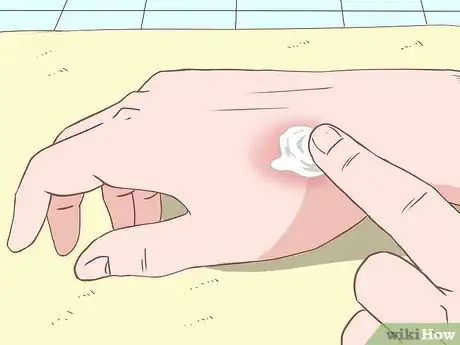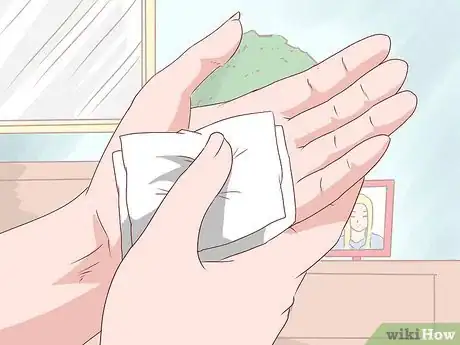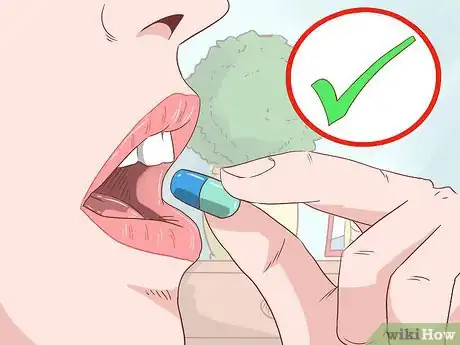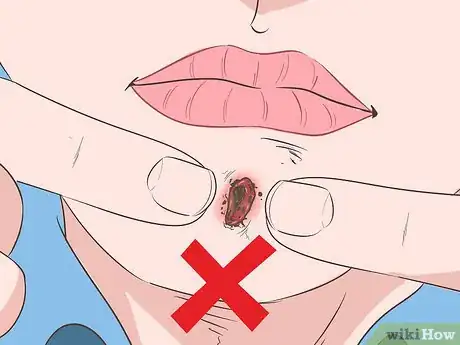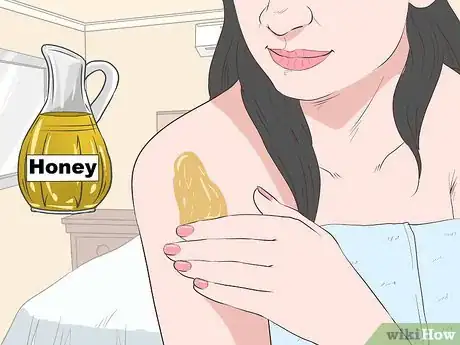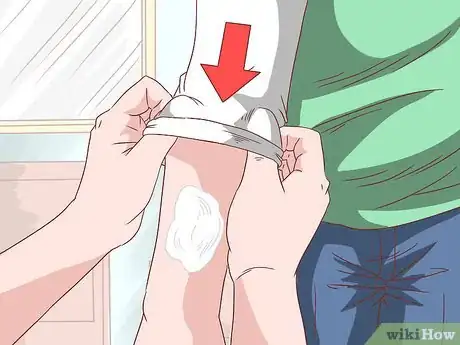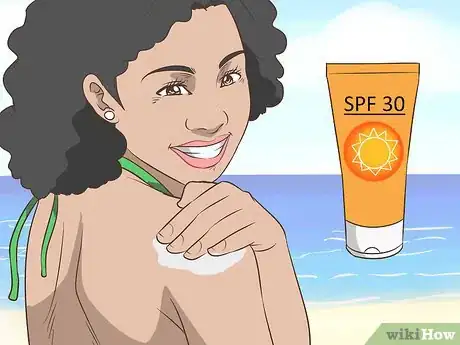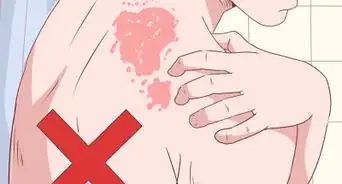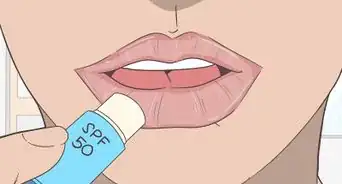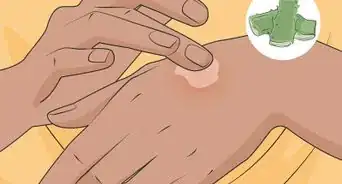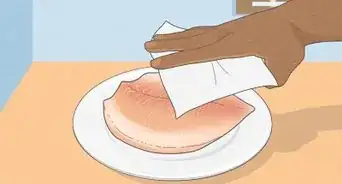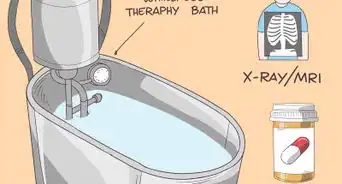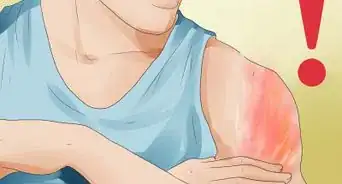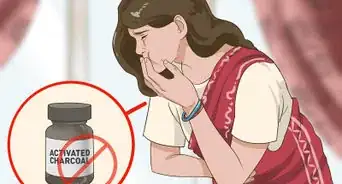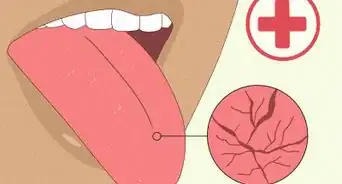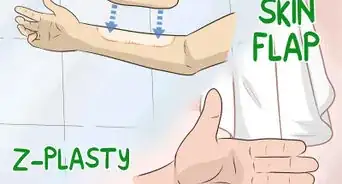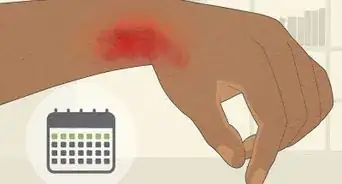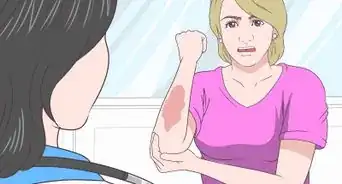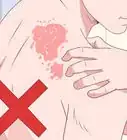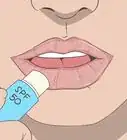This article was co-authored by Mohiba Tareen, MD. Mohiba Tareen is a board certified Dermatologist and the founder of Tareen Dermatology located in Roseville, Maplewood and Faribault, Minnesota. Dr. Tareen completed medical school at the University of Michigan in Ann Arbor, where she was inducted into the prestigious Alpha Omega Alpha honor society. While a dermatology resident at Columbia University in New York City, she won the Conrad Stritzler award of the New York Dermatologic Society and was published in The New England Journal of Medicine. Dr. Tareen then completed a procedural fellowship which focused on dermatologic surgery, laser, and cosmetic dermatology.
There are 7 references cited in this article, which can be found at the bottom of the page.
This article has been viewed 131,486 times.
Though the effects of nicotine and tobacco smoke are well-known, it’s easy to forget the other major risk involved with using a cigarette: fire. When in use, the end of a cigarette can reach temperatures of nearly 900 °C (1,650 °F).[1] Not only can cigarette burns be extremely painful, they can also leave significant scarring. Knowing how to clean and treat a cigarette injury will help you relieve the immediate pain and avoid long-term health complications and scarring.
Steps
Cleaning the Burn
-
1Place the burned area under cool water as soon as possible. For small areas, run the injury under cool water for 5 to 10 minutes, removing any ash and allowing the pain to dull. For larger areas, submerge the wound in a bowl or tub of water. When finished, gently blot the wound with a fresh towel to dry off.[2]
- Do not run the water at extremely cold temperatures or use ice. Doing so could damage the wound further.
- If necessary, remove any jewelry or other tight objects from the affected area before washing.
-
2Place a cooling pack on the wound. After 5 to 10 minutes, wrap non-stick gauze or tissue over the wound and place a cooling pack or cold compress on it to reduce swelling.[3] Keep the pack pressed onto the burn for 10 minutes at a time, or until it starts to feel uncomfortable.
- Do not use ice to treat the wound as doing so could cause tissue damage.
Advertisement -
3Apply aloe vera or vitamin E gel.[4] To soothe the skin without causing further irritation, apply a thin layer of aloe vera or vitamin E gel to the burn. Do not use topical butters or ointments, which can inflame the area and cause further damage. While your skin recovers, apply a small amount of either substance to the burned area twice a day, keeping it hydrated and healthy.[5]
- For open wounds, apply antibacterial ointment instead to prevent infection.
-
4Apply a non-adhesive bandage to open wounds. For some burns, in particular those that have blistered over, a bandage will not be necessary. However, for burns with open wounds, cover the affected area in sterile non-stick gauze that's designed specifically for burns wounds. Make sure the material is loosely wrapped to avoid cutting off circulation to the area or further damaging the skin.
- If you're dealing with a large wound, or you don't have non-stick gauze, visit a doctor to have the burn professionally dressed.
-
5Take pain relievers if necessary.[6] If your burn is causing a significant amount of pain, over-the-counter medications may be a good solution. Standard drugs like ibuprofen and naproxen should relieve pain without affecting the healing process. Avoid sprays and creams that have to be applied to the wound itself.[7]
- Before taking pain relievers, read all label warnings thoroughly. If necessary, consult with your doctor prior to use.
Healing the Wound and Preventing Scars
-
1Do not touch the affected area or pop any blisters. While your burn is healing, avoid touching it, scratching it, rubbing it, or popping any blisters that form. Though it may provide short-term relief, it can delay the healing process and lead to infections or scarring.[8]
- To deal with pain or discomfort, apply a soothing gel to the top of closed wounds.
- Don't use anti-itch creams. They can irritate burn wounds.
-
2Apply bacitracin ointment or honey over popped blisters. If a blister pops, apply bacitracin ointment or honey over the affected area immediately. Then, cover the wound with a non-adhesive bandage or gauze. This will help prevent infection.
- You may be able to find gauze that already has honey in it over the counter or with a prescription from your doctor.
-
3Wear clothing that compresses the skin. To prevent scarring after severe burns, medical providers often order tight, form-fitting clothes to compress the skin. For the less severe cigarette burn, general-purpose clothes can lead to similar results. Wear tight-fitting gloves, shapewear, or similar items over the affected area, serving as a top layer of skin while your body heals itself.[9]
- The right kind of clothing to wear depends on how big your wound is. Talk to your doctor to find out what kind of clothing you should be wearing.
-
4Keep the burned area out of direct sunlight. When the skin over your burn initially heals, it will be a different color than the rest of your body. Until it has time to redevelop its natural pigmentation, keep it out of direct sunlight to avoid any color scarring. This is best accomplished by hiding the area behind thick, dark clothing. If exposure is unavoidable, cover the area with sunscreen ranked SPF-30 or higher.[10]
Expert Q&A
Did you know you can get expert answers for this article?
Unlock expert answers by supporting wikiHow
-
QuestionWhat can I put on a burn to help it heal?
 Mohiba Tareen, MDMohiba Tareen is a board certified Dermatologist and the founder of Tareen Dermatology located in Roseville, Maplewood and Faribault, Minnesota. Dr. Tareen completed medical school at the University of Michigan in Ann Arbor, where she was inducted into the prestigious Alpha Omega Alpha honor society. While a dermatology resident at Columbia University in New York City, she won the Conrad Stritzler award of the New York Dermatologic Society and was published in The New England Journal of Medicine. Dr. Tareen then completed a procedural fellowship which focused on dermatologic surgery, laser, and cosmetic dermatology.
Mohiba Tareen, MDMohiba Tareen is a board certified Dermatologist and the founder of Tareen Dermatology located in Roseville, Maplewood and Faribault, Minnesota. Dr. Tareen completed medical school at the University of Michigan in Ann Arbor, where she was inducted into the prestigious Alpha Omega Alpha honor society. While a dermatology resident at Columbia University in New York City, she won the Conrad Stritzler award of the New York Dermatologic Society and was published in The New England Journal of Medicine. Dr. Tareen then completed a procedural fellowship which focused on dermatologic surgery, laser, and cosmetic dermatology.
FAAD Board Certified Dermatologist
Warnings
- Most first and second-degree burns, when properly treated, should take between 2 weeks and 1 month to heal. If, during this time, your burn has no significant decrease in pain, starts to smell, oozes a thick, yellow liquid, continues to swell, or causes you to have a severe fever, consult your doctor immediately.⧼thumbs_response⧽
References
- ↑ https://www.utwente.nl/en/news/!/2012/12/200876/less-harmful-constituents-when-heating-a-cigarette-at-lower-temperature
- ↑ https://www.mayoclinic.org/first-aid/first-aid-burns/basics/art-20056649
- ↑ Mohiba Tareen, MD. FAAD Board Certified Dermatologist. Expert Interview. 26 March 2020.
- ↑ Mohiba Tareen, MD. FAAD Board Certified Dermatologist. Expert Interview. 26 March 2020.
- ↑ http://ameriburn.org/wp-content/uploads/2017/05/burnfirstaid.pdf
- ↑ Mohiba Tareen, MD. FAAD Board Certified Dermatologist. Expert Interview. 26 March 2020.
- ↑ http://www.msktc.org/burn/factsheets/Managing-Pain-After-Burn-Injury
- ↑ http://ameriburn.org/wp-content/uploads/2017/05/burnfirstaid.pdf
- ↑ https://patienteducation.osumc.edu/Documents/UsingPresGarments.pdf
About This Article
To heal a cigarette burn, start by cleaning the wound. Run the injury under cool water for 5 to 10 minutes to dull the pain and remove any ash that may be in the wound. Then, gently blot the burn with a clean towel to dry it off. Don’t use cold or ice water or it could damage the wound further. Once the burn is clean, apply a thin layer of aloe vera or vitamin E gel to soothe the skin. Then, loosely wrap sterile non-stick gauze around the wound. As the burn heals, avoid touching the area or popping any blisters that form to minimize the risk of infection. For tips about how to apply bacitracin ointment to heal a cigarette burn from our Medical co-author, keep reading!
